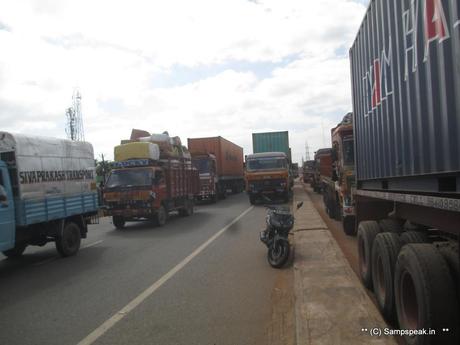
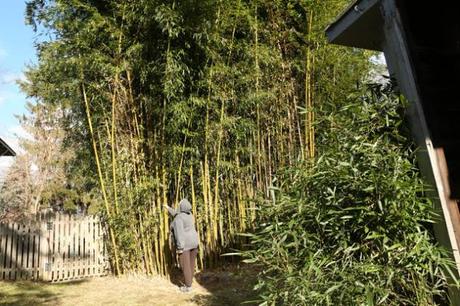
Bamboo – is flowering perennial evergreen plants in the grass family Poaceae. Giant bamboos are the largest members of the grass family. Bamboos are the fastest-growing plants in the world, due to a unique rhizome-dependent system. Bamboos are of notable economic and cultural significance in many countries while it is even a food source in some. Bamboo has a higher compressive strength than wood, brick, or concrete and a tensile strength that rivals steel. Wikipedia states that its origin is from the Kannada term bambu, which was introduced to English through Indonesian and Malay ! In the mid of last century – advent of shipping containers revolutionized the way the goods were transported. It not only changed the turn-around time; it reduced pilferage, reduced costs and enhanced International trade and commerce. For centuries, the packing was at best - in bales, sacks, barrels, pallets and the like – individually handled ‘with care or with gay abandon – despite all the marks on top of packing !!’ – at Shore and nearer ships, it was pulleys, cargo hooks, manual hands and more – and thus took longer days for the vessel at Port to get loaded and unloaded. The man who made the paradigm shift - Malcolm McLean is no more – he patented and reportedly took loan for $42m and purchased the Pan-Atlantic Steamship Company with docking rights so that he could modify cargo ships to use his new containers. Cargo handling has come a longway – but on predicted lines – the majority of containers used worldwide today comply with the ISO standard, with 20'- and 40'-long containers predominating. There are some unusual "Jumbo" containers of 45' and 48' in length, and even 53' long containers have been approved for use for some u uthroughout the USA, while some states too. But mostly it is all TEU or Forty footers. Standard containers are also known as general purpose containers. They are closed containers, i.e. they are closed on all sides. In general, they have doors on one side. Its frame and bottom cross members are made of steel profiles, walls are of corrugated steel [sometimes aluminum sheets also]. The floor board is generally wood – strong, resilient, will not dent, can be repaired locally – besides would provide adequate coefficient of friction, which is important for cargo securing. Some may have optional extra-fittings like : forklift pockets; gooseneck tunnels; grappler pockets and the like. Have once seen a container fitted with special lashing rings to enable clothes to be hung !
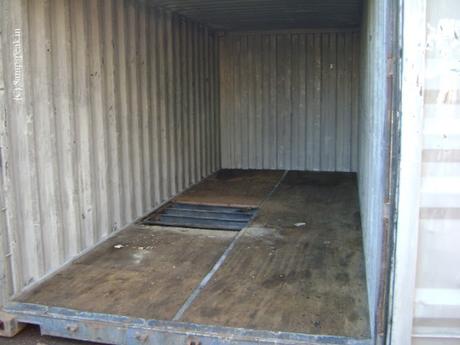 Wood
has been used by humanity from time immemorial for cooking to innumerable
aids. Container floor boards are of wood
and these components are impregnated against insect infestation and are
frequently cleaned; sometimes chemical wash, depending on the purpose of
usage. Though what I saw and now writing
about are news to me – it may not be to those in the industry, as this is not a
latest development*.
Shipping
containers have traditionally used all wood flooring. In many cases this wood
is harvested illegally in developing countries. In the past decade,
manufacturers have been exploring different materials to use for the floor of
the shipping containers that would not have as negative an impact as the wood.
After a variety of tests with various materials the group found that a mixture
of wood and steel was a good compromise. The solvent based paint used on most shipping
containers is another factor that has a negative impact on the environment due
to its adverse effects on the earth's ozone layer.
Wood
has been used by humanity from time immemorial for cooking to innumerable
aids. Container floor boards are of wood
and these components are impregnated against insect infestation and are
frequently cleaned; sometimes chemical wash, depending on the purpose of
usage. Though what I saw and now writing
about are news to me – it may not be to those in the industry, as this is not a
latest development*.
Shipping
containers have traditionally used all wood flooring. In many cases this wood
is harvested illegally in developing countries. In the past decade,
manufacturers have been exploring different materials to use for the floor of
the shipping containers that would not have as negative an impact as the wood.
After a variety of tests with various materials the group found that a mixture
of wood and steel was a good compromise. The solvent based paint used on most shipping
containers is another factor that has a negative impact on the environment due
to its adverse effects on the earth's ozone layer.
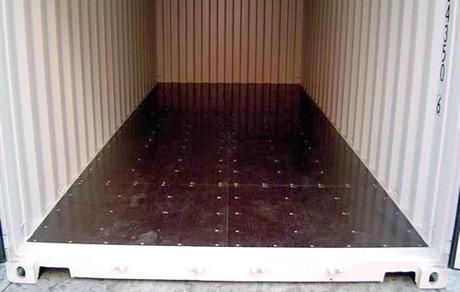
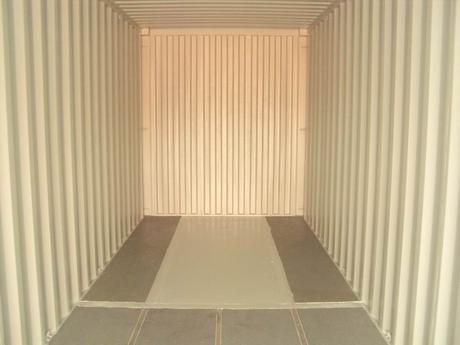
One alternative to wood is – bamboo that is being used in container floors to improve the environmental and economic efficiency of its operations. In the year 2o12, by some estimates more than 6 lakh TEU were fitted with bamboo floors. CMA CGM in their site claims that they the first to use bamboo-floor containers in 2005 and subsequently they purchased 50,000 bamboo containers of which 25,000 were “Light Steel” containers. The container in photo had written over ‘eco-friendly container with bamboo floors’ – the photos of bamboo floors are from the website of CMA CGM.
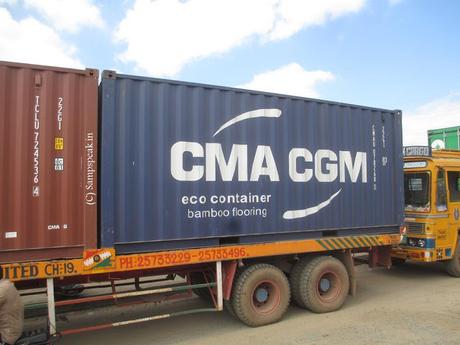 Moving
away from containers – bamboo has been used as a fence to mark property lines
and lend privacy but in North Jersey emerged as a divisive issue ! – driving
homeowners, locals and state officials debating on how to regulate it. A news item in northjersey.com reads that
more than a dozen municipalities across the state — including Wayne, Emerson,
Hillsdale, Palisades Park and Rockleigh — have some sort of bamboo regulation
in place. Others, like Washington Township, have considered adopting an
ordinance to regulate bamboo, only to abandon the effort after concluding that
it would be difficult to enforce, or that it was not the place of government to
interfere with the rights of property owners or to mediate in disputes among
neighbours.
The
trouble is that grown as ornamental privacy screen, the plant can grow through
cracks in sidewalks, pool linings and home foundations. The stems go dormant
only during periods of sustained cold temperatures, meaning they have continued
to spread during North Jersey’s spell of unseasonably temperate weather. Some neighbours are fighting hard on ‘debris
removal’ – that of overgrown encroaching their land from that of neighbor.
With
regards – S. Sampathkumar
Moving
away from containers – bamboo has been used as a fence to mark property lines
and lend privacy but in North Jersey emerged as a divisive issue ! – driving
homeowners, locals and state officials debating on how to regulate it. A news item in northjersey.com reads that
more than a dozen municipalities across the state — including Wayne, Emerson,
Hillsdale, Palisades Park and Rockleigh — have some sort of bamboo regulation
in place. Others, like Washington Township, have considered adopting an
ordinance to regulate bamboo, only to abandon the effort after concluding that
it would be difficult to enforce, or that it was not the place of government to
interfere with the rights of property owners or to mediate in disputes among
neighbours.
The
trouble is that grown as ornamental privacy screen, the plant can grow through
cracks in sidewalks, pool linings and home foundations. The stems go dormant
only during periods of sustained cold temperatures, meaning they have continued
to spread during North Jersey’s spell of unseasonably temperate weather. Some neighbours are fighting hard on ‘debris
removal’ – that of overgrown encroaching their land from that of neighbor.
With
regards – S. Sampathkumar
1st Jan 2016

